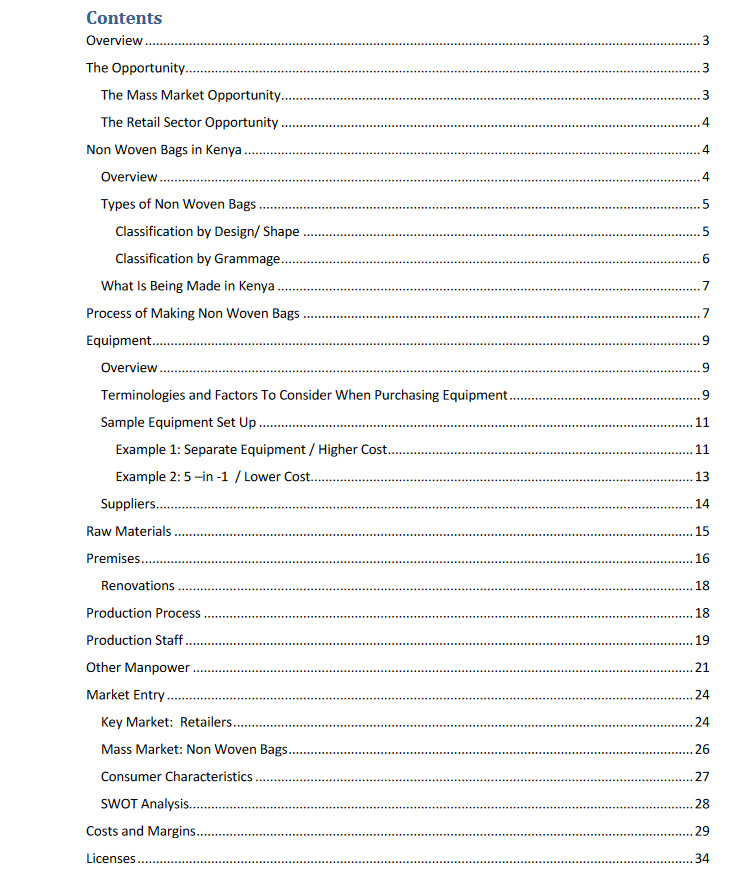Non Woven Bags Making Business Plan
Non Woven Bags Making Business Plan

Non Woven Bags Making Business Plan Overview
This Non Woven Bags Making Business Plan looks at the making of non woven bags. Non woven bags are the now common carriers that substituted polythene after the August 2017 ban on the latter. The Non Woven Bags Making Business Plan will give you a very good picture of the opportunity in the business, equipment, process, market and production.
On the face of it there is a huge opportunity in the business what with the rush to fill the gap created by the ban. However actual success will depend on a variety of factors including understanding of the market, efficiency of operations and the ability to get the products to as many consumers as possible.
The Opportunity
The Mass Market Opportunity
Mass market consumers are looking for practical and affordable packaging products for their everyday shopping and carrying needs. Until August 2017, this need was largely fulfilled using polythene papers. However, a government ban triggered by environmental concerns, of the kind of polythene papers used by the mass market consumers has left a gap in the market. A gap existing packaging material manufacturing companies are struggling to fill.
By law substitutes to the kind of polythene papers previously used by the mass market are supposed to be eco friendly and not necessarily biodegradable. Before the ban there were at least
260 packaging material manufactures, 176 of these in a way or another leaning towards polythene bags.
After the ban the latter’s equipment became obsolete and many closed down. Of the remaining, our market research shows, only 22 had the capacity to produce eco friendly bags for the mass market such as non woven bags.
These companies were largely focused on the Rwandan market which banned the use of polythene papers in 2008. Still Rwanda is a comparatively smaller market. According to World Bank in 2016 Rwanda had a population of 11.92 million people, compared to Kenya with a population of 48.46 million, growing at a rate of 2.6% annually.
With the ban the companies are besieged trying to serve both the Kenyan and Rwanda market and this has attracted new players. Apart from trying to meet the demand is the effort to come up with the right eco friendly bags for the mass market.
Presently the Kenyan market is presently at an experimental stage with as many types being introduced as are losing favour in the market.
A new company should enter the market first to help meet the demand for eco friendly bags. Secondly will be to come up with the ideal bags for the mass market.
Before September 2017 the mass market consumption of polythene papers was estimated to be around 160 million bags per month. Although consumption levels are expect to initially decrease because of increased recycling and the higher cost of the present biodegradable bags its not to a level that will make the bags business obsolete. Our estimate based on data from vendors is that consumption will settle at between 95 million and 130 million bags per month.
Download Non Woven Bags Making Business Plan / guide here